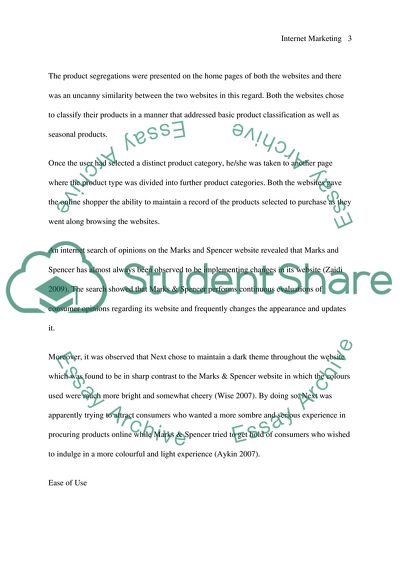Cite this document
(Comparison of Online Retailers' Website: Next versus Marks & Spencer Term Paper - 1, n.d.)
Comparison of Online Retailers' Website: Next versus Marks & Spencer Term Paper - 1. Retrieved from https://studentshare.org/marketing/1730846-report-which-compares-and-contrasts-on-pair-of-online-retailers-next-vs-marks-spencer
Comparison of Online Retailers' Website: Next versus Marks & Spencer Term Paper - 1. Retrieved from https://studentshare.org/marketing/1730846-report-which-compares-and-contrasts-on-pair-of-online-retailers-next-vs-marks-spencer
(Comparison of Online Retailers' Website: Next Versus Marks & Spencer Term Paper - 1)
Comparison of Online Retailers' Website: Next Versus Marks & Spencer Term Paper - 1. https://studentshare.org/marketing/1730846-report-which-compares-and-contrasts-on-pair-of-online-retailers-next-vs-marks-spencer.
Comparison of Online Retailers' Website: Next Versus Marks & Spencer Term Paper - 1. https://studentshare.org/marketing/1730846-report-which-compares-and-contrasts-on-pair-of-online-retailers-next-vs-marks-spencer.
“Comparison of Online Retailers' Website: Next Versus Marks & Spencer Term Paper - 1”, n.d. https://studentshare.org/marketing/1730846-report-which-compares-and-contrasts-on-pair-of-online-retailers-next-vs-marks-spencer.


